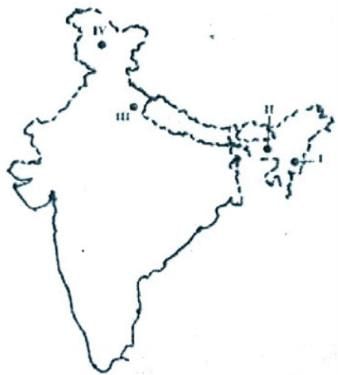Test: Land Soil Water Natural And Wildlife Resources- 4 - Class 8 MCQ
20 Questions MCQ Test - Test: Land Soil Water Natural And Wildlife Resources- 4
Terracing is an effective method of soil conservation in_____________.
Soil conservation means_________.
In Tamil Nadu soil erosion by___________is very common in Kambam valley.
Planting of trees on a large scale to check soil erosion is known as__________.
Mulching is associated with use of________________.
Where does approximately 69% fresh water on the earth occur?
In India which irrigation sources have the maximum area?
Soil erosion is prevalent in__________.
It is important to make small check dams across the flooded bullies because they-
(i) hold water for irrigation.
(ii) hold water and prevent soil erosion.
(iii) recharge groundwater.
(iv) hold water permanently. Select the correct options from the above-stated reasons-
Match the freshwater lake on the map of India (I, II, III, IV) with their respective names.
A. Bhimtal
B.Loktak
C. Barapani
D. Dal Lake

Which one of the following types of erosion is responsible for the formation of Chambal Ravines?
In which of the following ways can soil be conserved?
1. Contour Ploughing
2. Terracing
3. Shifting cultivation
4. Crop rotation
Soil can be conserved in a best on the hills by which of the cultivation methods?
Which one of the following is the main cause of land degradation in Punjab?
The removal of top soil by water or wind is called___________.
Which one of the following is not a biosphere reserve?
The phenomenon of the erosion of the highlands is called_______________.
In which of the following continents is Tanzania situated?
Which of the following is the most important natural resource?
The uneven distribution of population in the world is due to the varied characteristics of



















